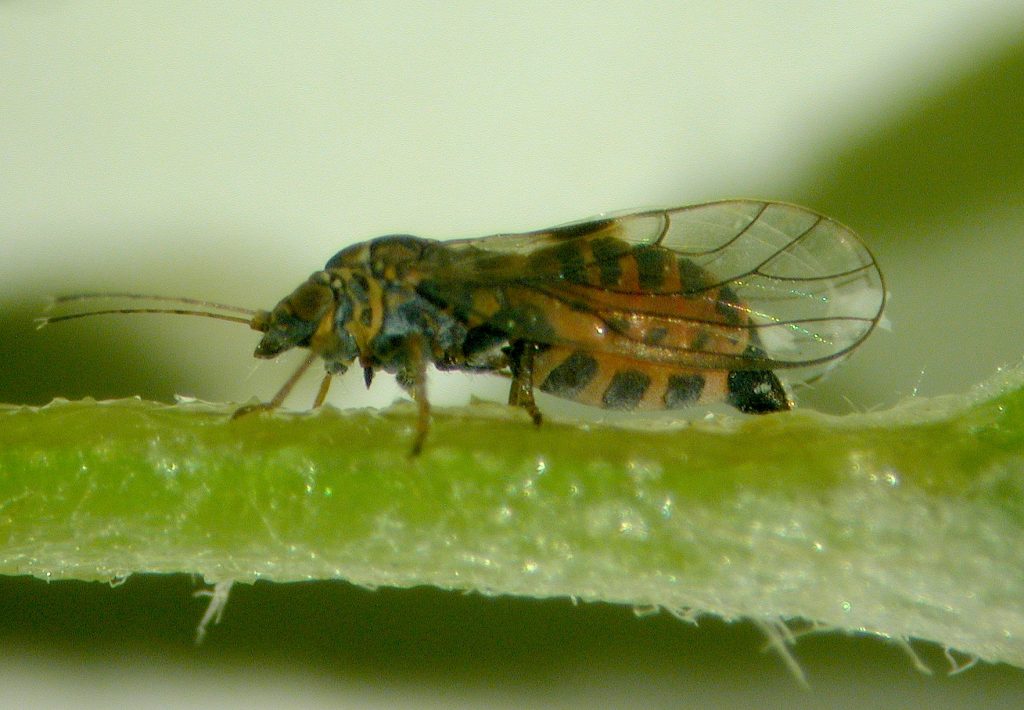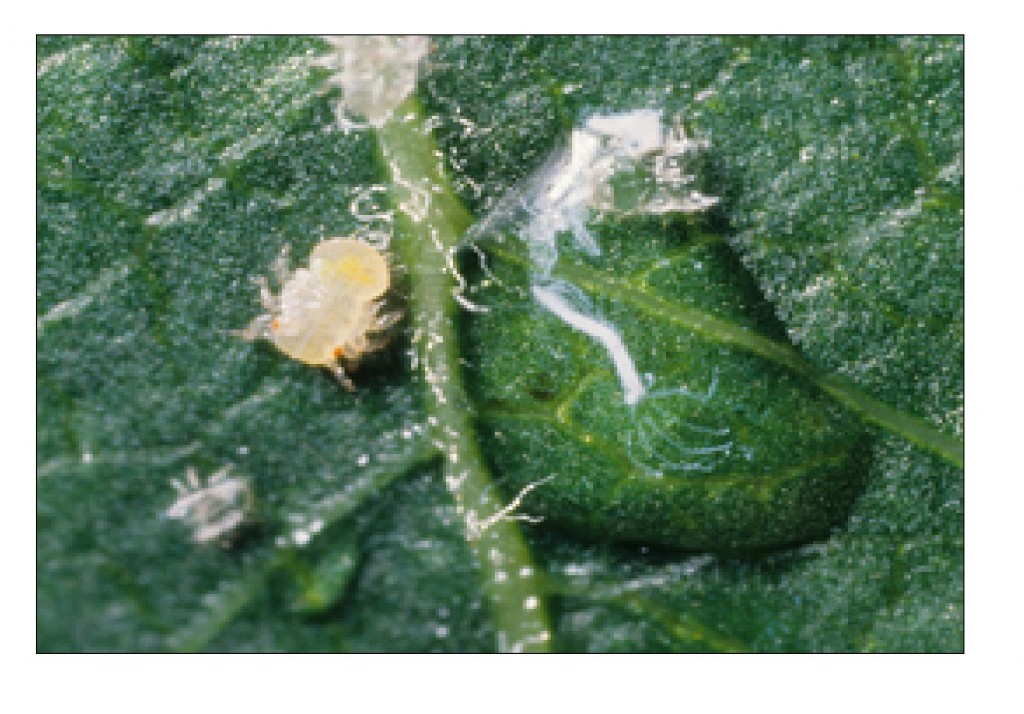Overview: At the Hudson Valley Lab Research orchard, Bartlett are now at white bud with early Asian pear in full bloom. Pear psylla nymphs have begun to emerge with egg laying on flower clusters. We are now finding psylla egg numbers above 1 egg per bud or leaf on untreated pear. Trees treated with two applications of horticultural oil at 2 and 3% respectively over the past three weeks now have 0.4 eggs per bud in our research orchard.
Management of the 1st generation during the pre-bloom period is critical in reducing seasonal populations that arise in mid-late May (2nd generation) and June-July (3rd generation) through Bosc harvest in September when the 4th generation of pear psylla may occur during flush growth from August rains.
Management for adult and nymph populations should be considered in the lower to mid-Hudson Valley this week. Wednesday evening into Thursday early morning, Saturday throughout the day are possible forecast windows for application with diminishing wind and adequate drying time. In sites where temperatures fall below 32F the use of oil is not recommended within 72 hours of either side of a frost to reduce the risk of phytotoxicity to flower buds and foliage.
Insecticide applications to manage adults and nymphs. A list of insecticide options are found below. These options include tools with direct contact activity for adult and nymph with residual feeding toxicity for nymphs feeding on flower stems and foliage. Premix combinations may only be effective used with a penetrant (abamectin), such as 0.25% oil, that provides penetration into plant cuticle. Be aware of the temperature constraints for applications of oil this week and delay the use of oil as needed!
Options that have shown excellent results from our research trials to manage pear psylla include (pgs 25-30):
* Reduce egg laying and nymph establishment using Surround WP at 50#/A at white bud and petal fall
* Reduce egg laying and nymph development using 1% horticultural oil beginning at 1C on a two week program to end of season.
* Reduce pear rust mite, adult and nymph psylla beginning at PF and 2C using AgriMek SC with penetrating adjuvant such as horticultural oil at 0.25% tank mix.

Introduction: Pear production in the northeastern US has been plagued by a number of insect and disease pests. Pear psylla, Cacopsylla pyricola (Foerster) is by far the most important insect pest of eastern pear-growing regions. Difficulty in managing this insect has, in part, resulted in the decline of pear cultivation throughout all states and especially true of European varieties and, to a lesser degree, in Asian pear production.
Pear psylla is a European invasive pest, introduced into North America and discovered in Connecticut in the 1830’s. Pear, genus Pyrus, in the family Rosaceae, is the exclusive host of this pest.
Biology: Winter form adult body color is dark red-brown to black, with wing veins very visible and wing spot pronounced on the hind edge of adult at rest. From head to wing tip adults are 2 mm in length with four dark stripes along the abdomen. Legs and antennae are mostly light brown to orange.
Adults overwinter along the wooded edge or within pear orchards, with most of the population mating within the orchard. Spring adult femaless are capable of laying 500 eggs and begin ovipositing in crevices of buds, then foliage and fruit spurs as leaves unfurl. Three to four generations can occur during the spring, summer and early fall in the Hudson Valley.

Eggs are elliptical in shape, pale cream when first lain, turning yellow-orange as they age. Nymphs are white to pale yellow upon emergence, developing through 5 instar stages, turning greenish brown as the exoskeleton sclerotinizes during tha late instar stage. In early instar stages as it begins to feed, a honeydew droplet forms over the nymph to keep it from desiccating.
Injury: The primary source of economic injury by pear psylla is to the fruit from the ‘shunting’ of droplets containing concentrated sugar as the epst feeds on foliage. This ‘honeydew’ drops onto fruit and foliage, acting as a substrate for sooty mold, causing a black russet on fruit and necrotic areas on foliage known as leaf scorch, which leads to defoliation. Sooty mold and leaf injury may reduce photosynthesis and return bloom, especially in Bosc. Severe yearly injury can result in ‘psylla shock’, resulting in tree decline and death of Bosc plantings.


